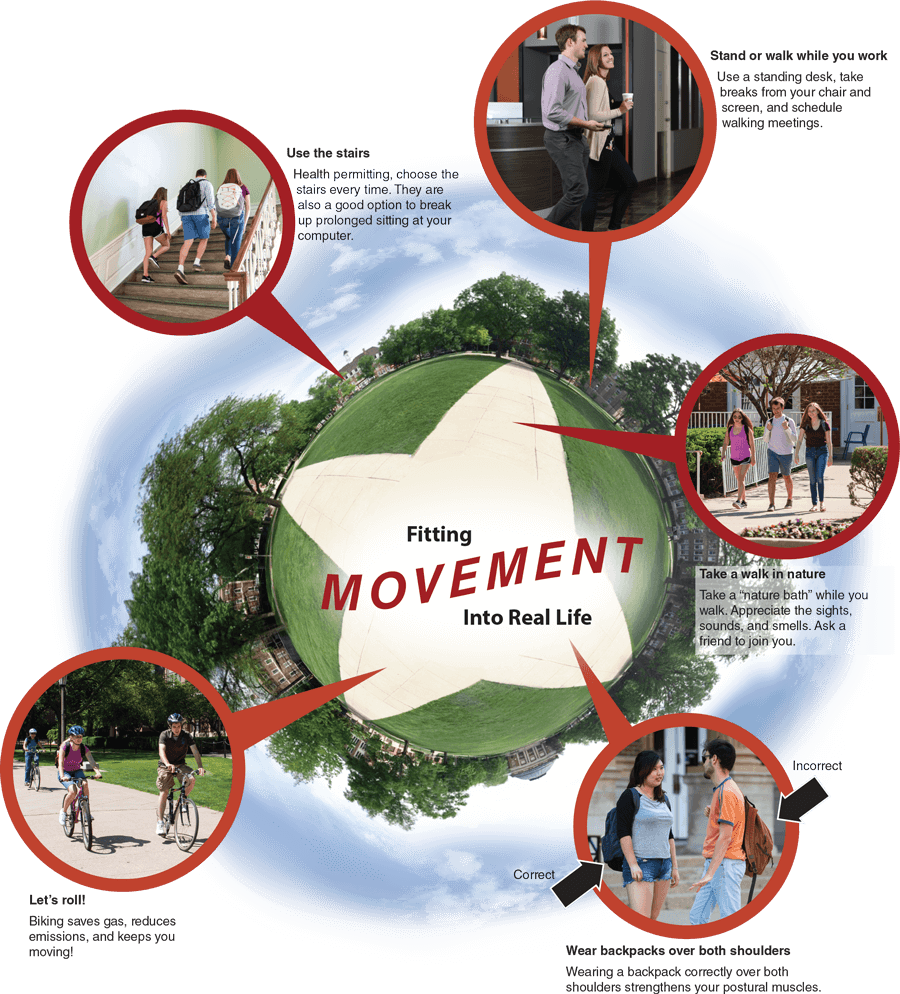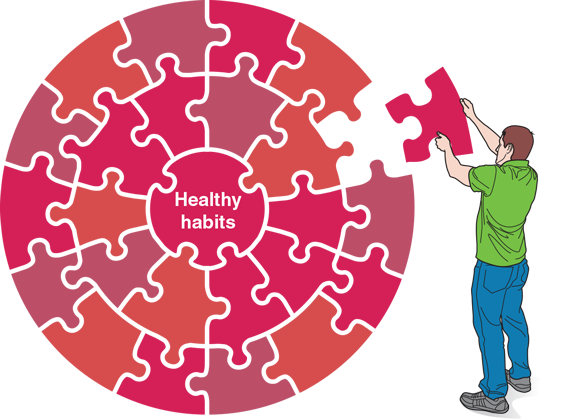Fitting Movement Into Everyday Life
This is an excerpt from Fitness and Well-Being for Life 2nd Edition With HKPropel Access by Carol K Armbruster,Ellen M Evans,Catherine M Laughlin.
The ACSM exercise guidelines and PAG both include summaries of extensive research showing the positive physiological and psychological benefits of regular exercise and physical activity across the life span. Many of the benefits will be described in detail in the following chapters. Benefits for young adults tend to be related to decreased stress, anxiety, and depression, as well as improved weight management. But as they move toward middle age, more important benefits include decreased risk of chronic diseases and conditions, as compared to middle-aged and older individuals who do not move daily and who sit a lot. The goal at the end of a long life is to preserve the capability for independent living and lots of social activity. Regular physical movement is necessary not only to look better, but also to enjoy leisure activities well into your 80s and even 90s.
Experts suggest that a better way of increasing physical activity is to look beyond guidelines and recommendations and focus more on creating environments built for easy access to movement experiences. For example, creating walking and biking paths could enhance movement access and opportunity, thus making this healthy choice an easy choice. If we build it, will they use it? Some literature suggests this is true, but a more important question is—will you choose to use it? The majority of college campuses in the United States are highly walkable, cycle-friendly, and safe. We encourage you to make the most of this easy access to a safe, walkable environment.
To integrate consistent movement into your daily movement choices, focus on your behaviors as well as how you interact with your environment daily. Start thinking about your environment as your new gym. Your opinion of hills, stairs, and loaded backpacks might start to change. Remember that walking to class will contribute to your collective health outcomes—every movement counts! Take those stairs every chance you get! Your body needs to move, but your mind must make the decision to move more and sit less even when easier choices are available (e.g., the campus bus). Often you will find that when you move consistently throughout your day you will feel more energetic, and your sleep will improve.
As you go through your life stages, you will need to work hard to continue to incorporate movement into your day wherever you are located and with whatever equipment you can locate. For example, milk jugs filled with water or sand make great resistance training equipment for many middle-aged and older adults. And of course, walking is the most accessible activity for most individuals. Figure 2.4 presents very accessible ways you can incorporate physical activity into your busy days on campus. The chapter 2 labs on HKPropel will provide an opportunity to reflect on your personal fitness and daily movement history and preferences.

Setting SMART Goals for Movement
Setting SMART goals (ones that are specific, measurable, attainable, realistic, and time bound) is an efficient way to begin any new behavior (see figure 2.5). Let’s briefly review how to set a SMART goal using physical activity (steps) so you can start to think about the goal-setting process for your health habits. This will be a behavioral warm-up for chapter 3.

Following is an example of how one person set a SMART movement goal based on steps:
Specific. I would like to increase my steps per day so I get a weekly average of 10,000 steps a day by the last week of the semester.
Measurable. I’ll use my activity tracker to measure my steps per day and get a weekly average.
Attainable. Currently, I am getting 5,000 steps per day, so I believe that 10,000 steps per day is attainable as a goal.
Realistic. I currently get on the nearest bus to get to campus. I will skip the bus and walk to campus two times a week when I do not have early classes.
Time bound. I’m giving myself the entire semester to work up to my steps goal by increasing an average of 500 steps per day over the remaining 10 weeks in the class. By the last week of the semester, I will get an average of 10,000 daily steps.
The chapter 2 labs on HKPropel will help you set SMART goals for physical activity, exercise, and sedentary behavior. Use the same process mentioned in the previous example and make sure your goal meets the SMART criteria.
Once you have created a SMART goal, it’s time to break your goal down even further with specific behavioral components (discussed further in chapter 3). Let’s take the example of doing 150 minutes of movement a week. If you said you were going to do 30 minutes of physical activity each day for five days and you planned to do this by walking for 10 minutes three times a day, what behaviors must you change to do this? How would you measure the success of the goal? Do you need to enter the 10-minute breaks on a smartphone app? Will you buy an activity tracker and check out movement distances? Maybe you need to create a walking route that is 10 minutes long so you can walk it three times daily. Be sure to personalize your plan by choosing options that are going to work for you.
As you progress through the chapter 3 content and lab, you will continue to practice SMART goal setting to set a health goal that is not movement based. You’ll also prioritize your goals, choosing which ones to work on first. These might include more sleeping, changing your eating patterns, or drinking more water. Choose a goal that feels important to address now. If you want ideas for health goals outside of the physical activity realm, feel free to look ahead at other chapters in this book for inspiration, which discuss sexuality, stress, and addiction issues. Choose behaviors you’ll need to change to meet your health goal. If your health goal is to eat more vegetables, what strategies will help you do that? For example, maybe you’ll want to add vegetables you like to eat to your shopping list or change which aisles of the grocery store you choose to walk down.
More Excerpts From Fitness and Well-Being for Life 2nd Edition With HKPropel AccessSHOP

Get the latest insights with regular newsletters, plus periodic product information and special insider offers.
JOIN NOW


